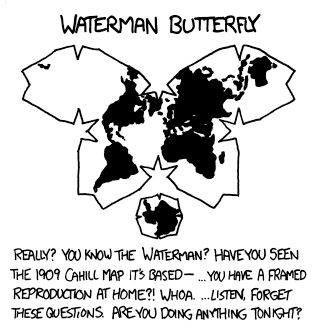No but seriously, Lisbon how?
How you doin Lisbon?
They can’t answer. The internet money was used to tip the landlord.
Local politicians seem to be more interested in “unicorn factories” and WebSummit show off events than solving the issues of the people that elected them. Twice. So the voters may not be too bright either.
Terrible charts aside, Bern and Vienna were surprising to me. Good wages? Or rent control laws?
unfortunately there is no amount of wage that prevent high rent… on the contrary. All the city with low relative rend have rent control laws.
And they must be updated often since landlords try to sneak their way.
For exemple, in Paris, there is a fashion trend of building offering " coworking rent", where they rent you a 10m2 for exuberant price, and they justify it by having a "PC room " in the building or something. So the city is in the process of banning thoses “coworking” place, which are just a way to bypass rent control law
adequate housing supply for the housing demand.
a concept a lot of cities actively refuse to believe is possible by their obsession with limiting development.
for rents to be stable you need 6-7% of available units vacant. much more if you want to drive prices down.
the vacancy rate in many places is like 1%. hence the rents going up super fast YoY. in my city people bid up rent because there are so few apartments available. so it lists for 2800/mo and the person that gets it is paying 3200/mo.
my city builds like 5000 new apartments per year. the population is growing by like 25,000 people per year. so the rent is skyrocketing. we keep adding lots and lots of jobs. every new development is like 5000 jobs, and 100 apartments. where are the other 4900 people going to live?
one reason why vienna is better than other cities:
https://en.wikipedia.org/wiki/Gemeindebau
they saw a problem and started building
lol one complex is even called karl marx hof
edit: chart is awful indeed it features capital cities only. Berlin is still cheaper than München. not for a lack of trying tho
RIP Lisbon
Waddahell goin on in Portugal. How are they not dead from starvation or is food just that cheap?
This is a bad “map”. The pie charts add clutter to the image, and it’s not immediatly obvious how two cities compare. The country borders offer no additional information other than vague context for those who know what countries are located where. Since there is only one datapoint per country, it might as well have been a line of columns showing percentage of salary used by colouring part of the column red. The map medium does not help in anyway to provide the information.
How is Rome not all red?
Someone do Japan
Outside of Tokyo and Osaka city center, housing costs aren’t that bad.
Housing in Japan is an depreciating value. Unlike other cultures, Japan homes are not an investment.
What part of tiny pie charts was necessary? Just make a heatmap but in dots.
Dot heatmaps font represent accurate numbers the same as this. Which size is 70%? Which is 50?
Nah that’s a bad choice.
Right? Is this a revival of dataisugly?
All I see is the two colors. If I wanted to have to look closely I would have just opted for a list.
How much sense does a heatmap make if you have one data point per country? Also, I don’t know what you mean by dots? (Asking to understand)
Put a dot on the map for each data point, or colour regions if that’s how the data is.
Given this is effectively one piece of data (% of income on rent) you can colour it on a scale. A red dot is 100% on rent. A green dot is 0% on rent. Colours in between represent middle states.
I actually prefer this though, easier to see detail instead of having to compare shades of colours, our brains have issues with that sometimes. (This can be avoided with a good colour scheme I guess?)
Greatly prefer this as well. It’s a lot easier to tell the difference between 50 and 75% with a pie chart than it is with your eyeballs looking at how similar or different two colors are.
Scrap the pie charts. It’s a lot easier to see the difference between 50 and 55% when it’s represented as the coloured part of a column representing 100% Pie charts only work when the difference are big enough.
Do you have an example? For me, it would be very difficult to tell the difference between a single color that’s a mix of 50% blue, 50% green, vs 45% blue, 55% green, and have any kind of idea what value they corresponded to. But with a pie chart, it’s easy.
Are you talking about this kind of bar chart kind of thing?

(picture attached)
For me, this wouldn’t work as well on a map because a pie chart is kind of like a big point, but the rectangular shape of the column would look weird on a map. You wouldn’t know where the center of the column was supposed to be as easily as the pie chart is clearly directly on top of the city it’s talking about.
But most of this seems like it is about subjective tastes rather than peer-reviewed studies on what kind of map is more useful.
It’s great for detail, but bad for getting a general look. Could get busy with more data points.
I think it’s a good choice for this particular map, but I could imagine a different map with more cities which would be a bad choice for pie charts.
Geezus Lisbon, get your shit together.
“Wow can’t be fun to live in Tiran- holy fuck Lisbon!”
Tirana got crazy quick. 2 years ago we rented a 3 bedroom in the center for €850/month. Now you frequently see 1 bedrooms further out for €1200.
Isnt it the expats that are driving up the prices
Iirc it’s not immigrants but Airbnb. I’ve read articles about it, but it might be somewhere else
I’ve read both are true. Tourism + digital nomand, because Portuguese weather is good and lisbon is relatively affordable, but i’m sure a local could give you a better answer.
Lisbon has pretty strict airbnb regulations though
How well are they enforced?
That I don’t know for sure, but they have a short term rental registry and the units are labeled as such and there are signs in some places and a general information campaign warning tourists against “illegal listings.” Every place we stayed (4 total) was on the official registry. My understanding is that airbnb tends to play ball with these laws so as to not get banned, and most of the illegal listings are through scummy travel agents and smaller apps, which has kind of always been an issue.
That’s a pretty easy to avoid saying you’re an American immigrant
Hate that word “expat”. “I hate immigrants but I’m a white man with money living in a country I wasn’t born in”, or better worded, “immigrant, but also an asshole”
Weird choice to not include cities as big as the capitals. Milan, Zurich and Barcelona would definitely have been interesting.
It’s only capitals, not that weird a choice
ITT: people with no idea how to represent a proportion.
Pie charts are correct, here.
Pie charts are fine. What I want to know is why they rotated the chart backwards in 3D.
What’s going on in Lisbon?
Policies that are too welcoming to expats with high incomes and foreign remote workers that like sunny weather and cheap everything.
Also: air b&b’s and cheap ryanair flights
I suppose Portugal could do with a couple more cities with over a million inhabitants. It goes huge Lisbon, then relatively small Porto.
But Portugal should be for the Portuguese, I feel like the Algarve is mostly Brits and Dutchies
I feel like “X should be for the X-people” is maybe not the best phrasing, considering how that tends to play out throughout history.
I feel there is a distinction between, let’s call them ‘original inhabitants’, being xenophobic towards refugees and those inhabitants being economically unable to live in their own country due to rich folks buying vacation homes
The best second best weather in Europe 🤐
Using a pie chart to represent a single (scalar) data point … Bad map! Bad map!
Using a pie chart
to represent a single (scalar) data point …Badmap! Badmap!FTFY
The one for Zagreb doesn’t look realistic. I wanted to find the source, but I guess my search skills aren’t that great today.
This is missing the actual numbers.
Where is the supplemental data table and sources?!


















